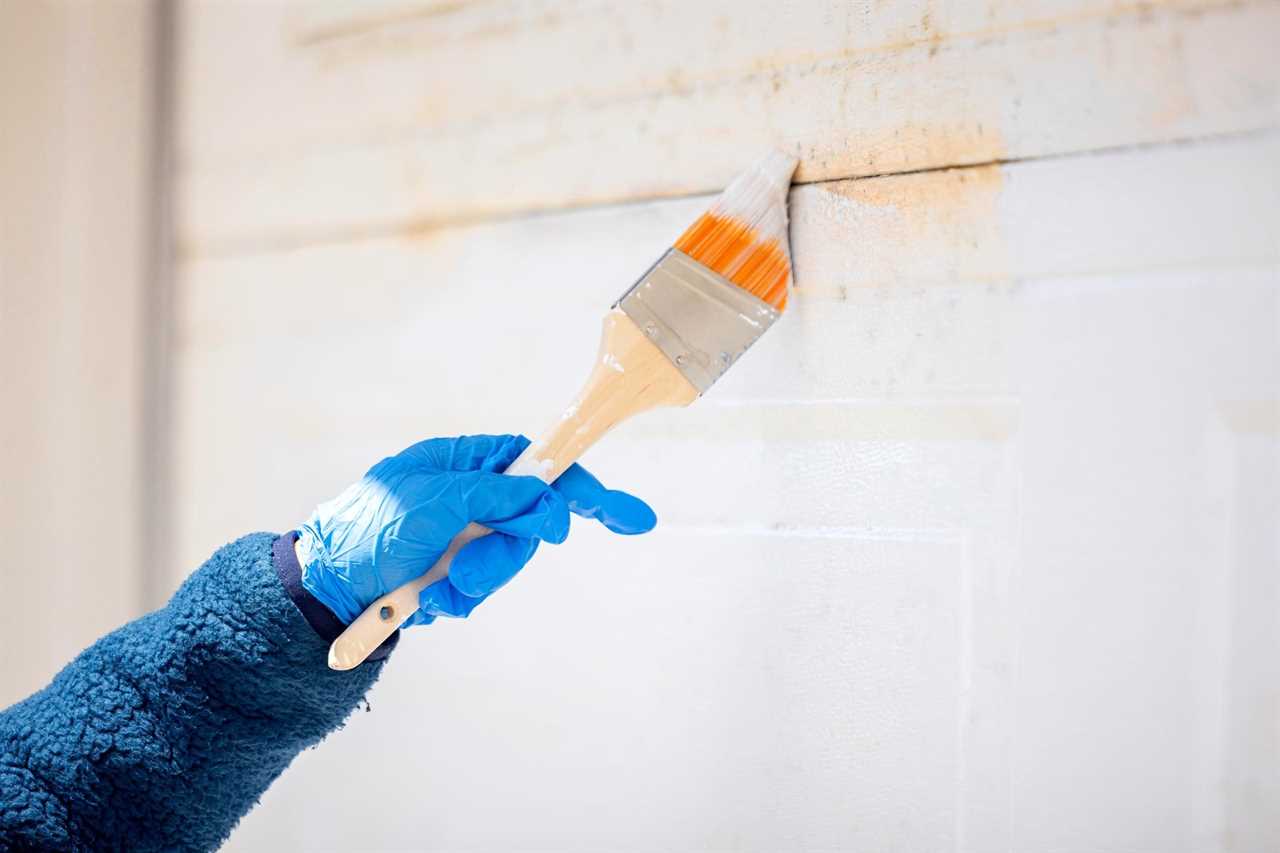With millions of steel garage doors installed in homes around the world, rust is a common concern. Moisture in the air, long-term exposure to oxygen, and even road de-icing chemicals can cause serious garage door rust over time. Besides making your home look unkept, that rust compromises garage door function and lifespan, too.
Fortunately, most DIYers can treat garage door rust without much difficulty. Here, I’ll walk you through the steps for properly removing it and preventing it from happening in the future.
Identify Garage Door Rust
From fixing rust on lots of metal surfaces, I know it often goes further than it appears. So look carefully.
Start by inspecting the entire garage door thoroughly, paying special attention to rust-prone areas like the bottom, edges and any exposed metal surfaces. Look for “bubbles” forming under the paint, paint-free spots, or reddish-brown flakes of corroding metal.
Gather Tools and Materials
Here’s what you’ll need:
- Safety gear: Protective goggles, rubber gloves and a dust mask to keep rust particles and paint fumes out of your lungs.
- Steel wool or wire brush: You’ll use this to remove loose flakes of rust from the door.
- Sandpaper: Grits ranging from 120 to 400.
- Rust converter and microfiber cloth: A spray-on chemical mixture that neutralizes rust and stops it from spreading.
- Shop vacuum: After removing the rust, it’s important to vacuum the door’s surface to remove all particles before painting.
- Primer and paint: Get the kinds specifically for outdoor metal surfaces.
- Masking tape and drop cloths: Chances are you’ll need to protect hardware, window trim and floors as you repaint the rust-free door.
- Screwdriver: You may have to temporarily remove some hardware to properly deal with rust forming underneath.
Prep the Area
Here’s how:
- Ensure proper ventilation: If you’re working on the inside face of your door, open garage windows or work with the door partially open if possible.
- Remove any objects or pieces of garage door hardware in your way: Keep careful track of the hardware and where it goes on the door so you can easily reassemble it later. Snapping a picture is easiest.
- Lay down drop cloths: Cover the garage floor, driveway, vehicle and any other surfaces you feel are at risk of getting rust or paint particles on them.
Remove Loose Rust and Debris
Use some steel wool or a wire brush to knock loose flaky rust, peeling paint or other debris from affected areas of your garage door. Keep the pressure moderate, using a back-and-forth motion in the same direction to remove all loose material.
Sand the Rusty Areas
After brushing away all loose rust, use 120-grit sandpaper to sand the surface smoothly. Make sure you’ve removed all traces of rust, then move on to 180-grit paper and repeat the process. Continue sanding with progressively finer grit paper until you reach 400 grit.
Apply Rust Converter
After sanding, vacuum the surface thoroughly to remove all dust particles. Spray the rust converter over the entire sanded surface, following the instructions on the can.
Use a clean microfiber cloth to spread the converter evenly. Allow the converter to dry over the next several hours; see the can for the recommended length.
Prime and Paint

Once you’re sure the rust converter is completely dry, apply spray-on primer to the entire sanded area, following the manufacturer’s instructions. Make sure to use primer formulated for metal surfaces. Once the primer dries, apply exterior-grade paint of the closest color you can find to your original garage door paint.
I find when repainting metal, spray paint makes it easier to get smooth, even results. But if there’s rust on most of the door, the job will likely be more economical with a paint can and roller. If you can’t find a close enough color match, you’ll have to sand and paint the entire door. Add a second coat when the first coat dries.
How To Prevent Garage Door Rust
Your best defense is installing a garage door that isn’t vulnerable in the first place, like one made of stainless steel or aluminum. If you’ve got a regular steel garage door, here’s what you can do to keep it rust-free:
- Inspect it regularly and deal with any small rust spots you find right away. Don’t let them spread.
- Keep it dry. Make sure the area around the bottom of the door is well-drained and doesn’t hold moisture.
- Clean it regularly. Wipe it down every month or so to remove dust, debris and corrosive substances from the road, which could lead to rust.
- Check the rubber seals on the edges to make sure they’re in good shape and properly keeping out all outdoor moisture.
Did you miss our previous article...
https://rsssuperfeeds.com/life-hacks/10-handy-gardening-tips-for-busy-people






